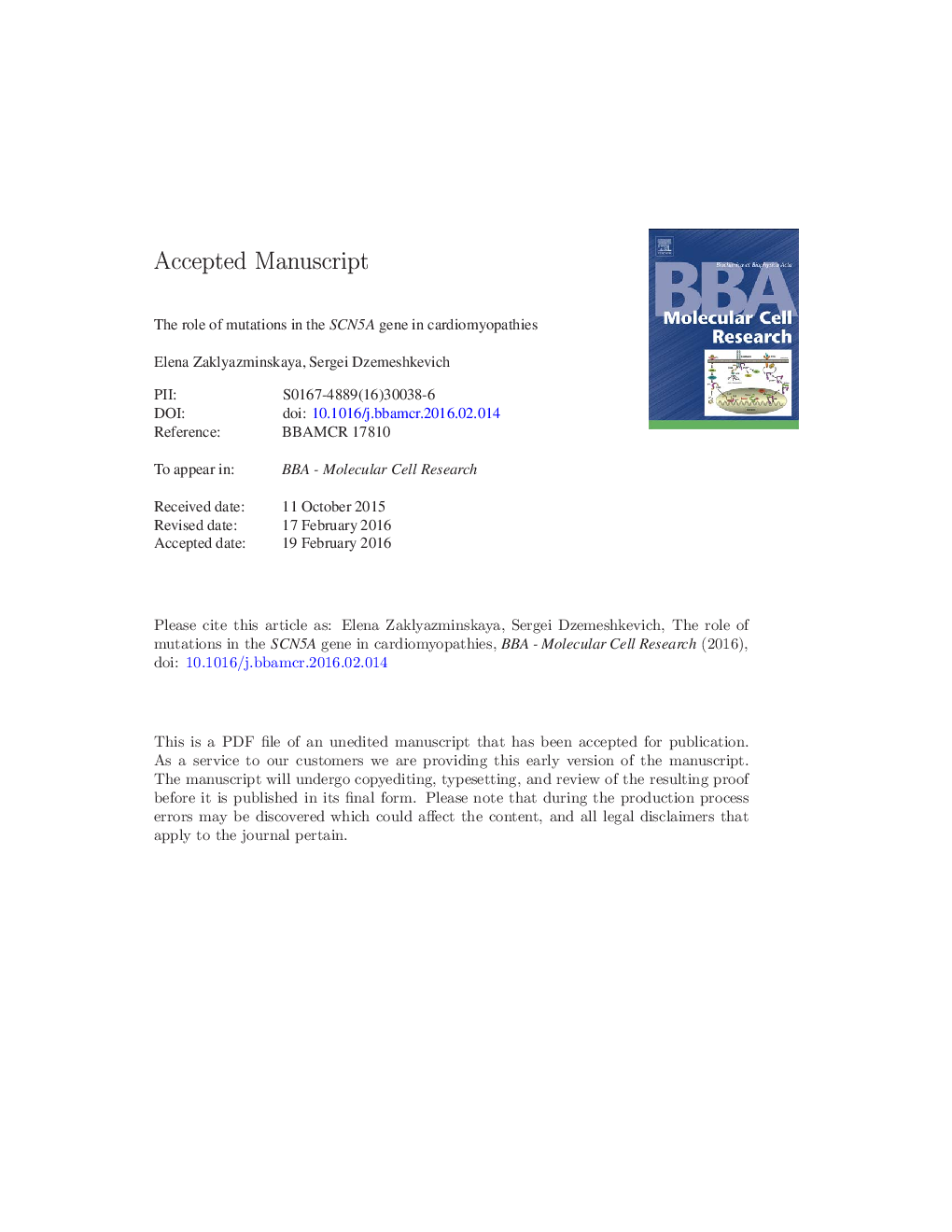| Article ID | Journal | Published Year | Pages | File Type |
|---|---|---|---|---|
| 10801635 | Biochimica et Biophysica Acta (BBA) - Molecular Cell Research | 2016 | 29 Pages |
Abstract
The SCN5A gene encodes the alpha-subunit of the Nav1.5 ion channel protein, which is responsible for the sodium inward current (INa). Since 1995 several hundred mutations in this gene have been found to be causative for inherited arrhythmias including Long QT syndrome, Brugada syndrome, cardiac conduction disease, sudden infant death syndrome, etc. As expected these syndromes are primarily electrical heart diseases leading to life-threatening arrhythmias with an “apparently normal heart”. In 2003 a new form of dilated cardiomyopathy was identified associated with mutations in the SCN5A gene. Recently mutations have been also found in patients with arrhythmogenic right ventricular cardiomyopathy and atrial standstill. The purpose of this review is to outline and analyze the following four topics: 1) SCN5A genetic variants linked to different cardiomyopathies; 2) clinical manifestations of the known mutations; 3) possible molecular mechanisms of myocardial remodeling; and 4) the potential implications of gene-specific treatment for those disorders. This article is part of a Special Issue entitled: Cardiomyocyte Biology: Integration of Developmental and Environmental Cues in the Heart edited by Marcus Schaub and Hughes Abriel.
Keywords
CMPAVBCRT-PARVCCRT-DLQT3AHACrtDCMEHRAISFCImplantable cardioverter defibrillatorAtrio-ventricularelectrocardiogramECGEuropean Society of CardiologyAmerican Heart AssociationEuropean Heart Rhythm AssociationextracellularESCCardiac resynchronization therapyICDcytoplasmicAtrial fibrillationAtrial standstillaction potentialCardiomyopathyArrhythmogenic right ventricular cardiomyopathyDilated cardiomyopathy
Related Topics
Life Sciences
Biochemistry, Genetics and Molecular Biology
Biochemistry
Authors
Elena Zaklyazminskaya, Sergei Dzemeshkevich,
